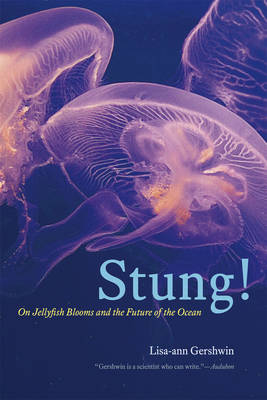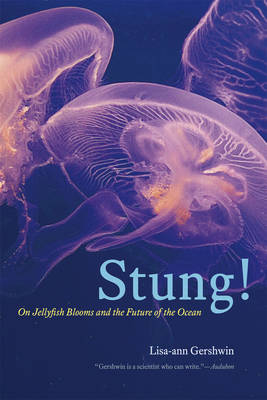
- Retrait gratuit dans votre magasin Club
- 7.000.000 titres dans notre catalogue
- Payer en toute sécurité
- Toujours un magasin près de chez vous
- Retrait gratuit dans votre magasin Club
- 7.000.0000 titres dans notre catalogue
- Payer en toute sécurité
- Toujours un magasin près de chez vous
34,45 €
+ 68 points
Description
Our oceans are becoming increasingly inhospitable to life--growing toxicity and rising temperatures coupled with overfishing have led many marine species to the brink of collapse. And yet there is one creature that is thriving in this seasick environment: the beautiful, dangerous, and now incredibly numerous jellyfish. As foremost jellyfish expert Lisa-ann Gershwin describes in Stung!, the jellyfish population bloom is highly indicative of the tragic state of the world's ocean waters, while also revealing the incredible tenacity of these remarkable creatures. Recent documentaries about swarms of giant jellyfish invading Japanese fishing grounds and summertime headlines about armadas of stinging jellyfish in the Mediterranean and Chesapeake are only the beginning--jellyfish are truly taking over the oceans. Despite their often dazzling appearance, jellyfish are simple creatures with simple needs: namely, fewer predators and competitors, warmer waters to encourage rapid growth, and more places for their larvae to settle and grow. In general, oceans that are less favorable to fish are more favorable to jellyfish, and these are the very conditions that we are creating through mechanized trawling, habitat degradation, coastal construction, pollution, and climate change. Despite their role as harbingers of marine destruction, jellyfish are truly enthralling creatures in their own right, and in Stung!, Gershwin tells stories of jellyfish both attractive and deadly while illuminating many interesting and unusual facts about their behaviors and environmental adaptations. She takes readers back to the Proterozoic era, when jellyfish were the top predator in the marine ecosystem--at a time when there were no fish, no mammals, and no turtles; and she explores the role jellies have as middlemen of destruction, moving swiftly into vulnerable ecosystems. The story of the jellyfish, as Gershwin makes clear, is also the story of the world's oceans, and Stung! provides a unique and urgent look at their inseparable histories--and future.
Spécifications
Parties prenantes
- Auteur(s) :
- Editeur:
Contenu
- Nombre de pages :
- 456
- Langue:
- Anglais
Caractéristiques
- EAN:
- 9780226213033
- Date de parution :
- 26-09-14
- Format:
- Livre broché
- Format numérique:
- Trade paperback (VS)
- Dimensions :
- 152 mm x 226 mm
- Poids :
- 612 g

Les avis
Nous publions uniquement les avis qui respectent les conditions requises. Consultez nos conditions pour les avis.






